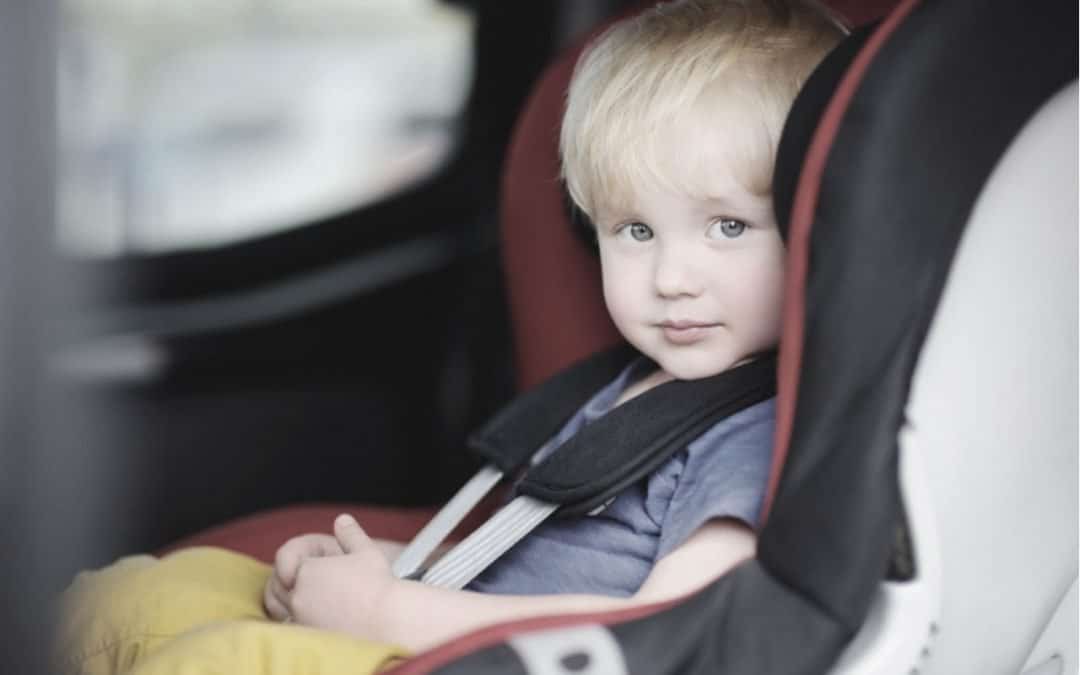The new school term is here. You know what that means; packed lunches, scuffed shoes that need daily polishing and the morning ritual of loading kids into the car to make the morning bell.
Phew, just reading that feels exhausting. As parents, we often face hurdles when it comes to looking after our offspring, and one of the biggest is keeping kids safe in the car while travelling to and from school.
Staying safe on the road is more than just sticking to speed limits and driving on the left-hand side. It’s about keeping everybody safe inside the car too. With the increased traffic on the roads with many Australians returning to work and school, it’s more important than ever to make sure you’re doing everything you can to ensure the safety of your family while driving to school.
Across the world, car accidents are the biggest cause of death of children aged 15 and under. Sadly, hundreds of these deaths and injuries are because children are not properly restrained inside the vehicle. As parents, this is something you can easily change.
From wearing the right seat belt to using booster seats, here’s what you need to know to keep your kids safe in the car.
Minimising distractions while driving to school
One of the most dangerous things that can happen while you’re driving to school is getting distracted by your children. We’ve all had one of those mornings; someone is upset because they’ve misplaced their favourite hair tie, while the other child is trying to finish their homework in the car and asking you for the answers.
Distractions inside the car can result in an accident, at best a fender bender and at worst a serious crash resulting in injury. We don’t want anyone to get injured, so the best thing you can do is ensure that all distractions are minimised before you buckle up. That means homework is done at home and keeping a backup favourite hair tie in the glove box.
Nobody expects you to be a super-parent, but when it comes to staying safe en route to congested school-time traffic, it’s best to do everything in your power to keep focused on the road and surroundings.
It goes without saying that you should do your best not to distract yourself too. That means no texting, checking emails, phone calls or taking selfies while you’re on the road!
What seat belt should my child wear?
Seat belts save lives. It’s one of the most important lessons we teach our kids when they’re old enough to learn about car safety. By law, it’s the driver’s responsibility that children are suitably restrained in accordance with national child restraint law. To break it down by age, here’s what you need to know:
Under 6 months old
In the first six months of your child’s life, they need to be in an approved rearward-facing restraint while travelling in the car.
6 months – 4 years old
During this time, they need to be in either a rear or forward-facing approved child restraint with an inbuilt harness. If your child is under four years old and your vehicle has two or more rows of seats, they must not be seated in the front seat.
4 – 7 years old
Now that your kids are a little older, they should be seated in a forward-facing restraint with an inbuilt harness or an approved booster seat. While they can’t be seated in the front row if your vehicle has two or more rows, they can if children under the age of seven have taken all the back seats.
7 – 16 years old
Children aged from seven to 16 years old are strongly recommended to use an approved booster seat if they’re too small to be restrained by a seatbelt.
What if your child is too small for the recommended restraint or seat type? The best thing you can do here is to keep them on their current restraint until it’s safe for them to upgrade. Concurrently, if your child is too big for the recommended restraint or seat type, simply move them up to the next level.
When your child is 145 cm or taller, then they can use the standard adult lap-sash seatbelts in cars. Importantly, you should never be in a rush to buckle up your kids. Before you put the key in the ignition, take time to ensure they’re properly strapped in and ready to go.
Using booster seats
Legally, your child can sit in a booster seat when they’ve reached four years old. However, it’s widely recommended that they use one when they’re too tall for a forward-facing child restraint.
When seated in a booster seat, your child must be restrained by a suitable lap and sash-type seatbelt that is properly adjusted and fastened. If not, they need to be restrained with a suitable approved child safety harness that is properly adjusted and fastened. In Australia, there are three types of booster seats available. These include:
- Booster seats with a back
- Forward-facing restraint/booster seat combinations
- Booster cushions
When purchasing a booster seat, make sure you do your types of car seats available.
Ultimately, all children must be correctly fastened in the correct child car seat and seat belt for their age and size. Not only is this a legal requirement, but it’s also the simplest way to keep your kids safe in the car.
Shannon is a dedicated father to two beautiful children who keep him on his toes! As Marketing Manager at Real Insurance and with over 10 years of dedication to the company, he is committed to helping to ensure Australian families are protected.




